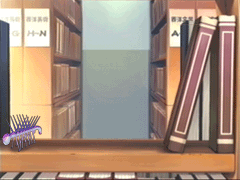Blog Archive
-
▼
2009
(14)
-
►
February
(13)
- MEDICAL SCHOOL PATHOLOGY.
- Hearing Test-AUDIOMETRY
- COMPREHENSIVE EYES EXAMINATION:Charts,color blind,...
- Skeletal Muscles
- Dissection Anatomy.
- Medical Imaging
- KNEE,ANKLE AND SHOULDER JOINTS LECTURES
- Understanding the Anatomy Behind Clinical Procedures
- Profesor Marian Diamond Education Outreach On Inte...
- Clinical Skill Dermonstration in Audio-Visual
-
►
February
(13)
Friday, March 13, 2009
Three Types of Muscle and their functions
There are three types of muscle, each with a different structure and function. Skeletal muscle produces the most powerful contractions and is essentially involved in performing the body's movements. Skeletal muscle is under conscious control and is therefore described as voluntary. It is composed of cells, elongated up to twelve inches in length, containing many minute myofibrils and nuclei. It can contract and relax rapidly, but is easily fatigued. Smooth muscle is found in the arteries and in the digestive and urinary tracts, and performs the slow, long-term contractions needed to maintain these systems. Smooth muscle is made up of elongated cells arranged in bundles, each with a single nucleus. Within the intestines an inner circular band produces ring-like constrictions and an outer longitudinal band produces wavelike motions. Controlled by the autonomic system, smooth muscle contraction is involuntary. Cardiac muscle, found exclusively in the heart, continuously generates very strong contractions and rarely tires in its task of pumping blood throughout the body. It has a built-in rhythm of contraction, but is regulated by the heart's pacemaker. Cardiac muscle forming the heart is made up of branched cells containing many nuclei. It occurs as thick spiral bands around the ventricles of the heart.[By Dizzo95]
Muscular System Structure and Function
Thursday, February 19, 2009
MEDICAL SCHOOL PATHOLOGY.

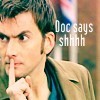


"These movies are dedicated to the greatest pathologist of all time---Martin A. Swerdlow, MD"Build it and they will come."[WashingtonDeceit ]. I am now continuing this MEDICAL EDUCATION legacy. Give me the moral support by making full use of the materials for which I work days and nights. Click To Enter=> XXX for PATHOLOGY and HISTOLOGY(complete slides from A to Z). All teaching in videos !! Very easy to understand with notes!!
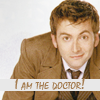
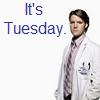
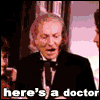

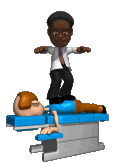

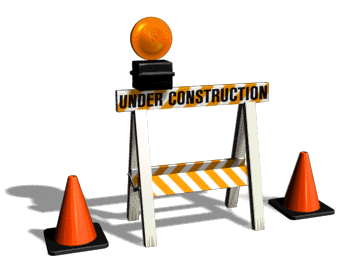


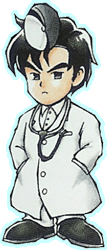

HIDDEN CAMERA: MEDIC-EDUCATION IS FUN BUT MAY MAKE U RUN. WELCOME ALL FRESHIES FOR ORIENTATION DAY!



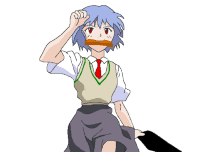

-
Wednesday, February 18, 2009
Hearing Test-AUDIOMETRY
(1)First determinine the hearing range ( at the lowest value of Hz).
(2)Then use this value of Hz (hearing frequency) for determining the LOUDNESS TEST.
Procedures Of Hearing Test FOR LOUDNESS (Db)---I Used In Teaching Medical, Dental and Pharmacy StudentsBased On the Audiometer as shown in the following in the YOUTUBE:
1. Increase the loudness (Db) say 5 DB from 5 DB at the start.==5db, 10db,15db,20db.......till the subject indicates sound is heard.(take the lowest reading, when the subject start perceive the hearing)
do Do it in a quiet place.
usiUsing a Earphone.
TeTest the hearing on one ear at a time.(block the other ear which is not being tested at that moment--There is a switch indicating sound is supplied to LEFT/RIGHT ear on the audiometer)
[
FoFor more information on AUDIOMETRY,AUDIOLOGIS, AUDIOMETER(instruement),Audiogram, BONE CONDUCTION:
anhttp://thought.kosmix.com/topic/Audiometer
<
Tuesday, February 17, 2009
COMPREHENSIVE EYES EXAMINATION:Charts,color blind,blind spot,fundoscopy, Opthalmoscope tutorial.
Color Vision Test - Official Version
The color vision test plates are from two commercially available color vision test books - "Color Vision Testing Made Easy" and the Pseudoisochromatic 24 Plate Color Vision Test by Dr. Terrace L. Waggoner.
There are seven pediatric color vision test plates and six adult color vision test plates. The video is for screening purposes only - not for a diagnosis. For a diagnosis, see your vision care professional.
Vision Test(Chinese)
Eye_chart_32
How to Examine Normal PupilsThis short video demonstrates a simple technique to thoroughly assess a persons pupils.
physical examination,pupil
Eye Exam 3/8Online Physical Exam Teaching Assistant OPETA
created by: Christina Cavanagh
Douglas Arnold
Richard Rathe, MD
Melanie Hagen, MD
Margaret Duerson, PhD
Rebecca Pauly, MD
The University of Florida College of Medicine
Harrell Professional Development and Assessment Center
and the Office of Medical Informatics
This work is licensed under a Creative Commons Attribution-NonCommercial-NoDerivs 2.5 License.
to find more FREE medical material links like this and to learn how search the internet visit http://web2097.blogspot.com
Two Minute Eye Exam (Eyepodvideo.org)
http://www.eyepodvideo.org This is a narrated video explaining the steps of an eight point eye exam. The video provides general instruction for students and primary care physicians and is a good introduction to the ophthalmic examination.
Author: Randall E Verdick, BA & John E Sutphin, MD
University of Iowa
Department of Ophthalmology
Slit lamp eye examination
Diabetic Retinopathy Screening
In this video, learn how remote screening in rural areas can help prevent blindness among patients with diabetes. CHCF and UC Berkeley are partnering to expand screening capacity to 100 clinics across California.
Screening for Diabetic Retinopathynew fundus camera for examining the retina without dilating the pupil
Dia
Diabetes is the leading cause of preventable new onset blindness in working age adults. You can have diabetic eye disease and not know it as it is painless and often has no symptoms until very advanced stages. Deborah K. Schlossman, M.D., of the Beetham Eye Institute at Joslin Diabetes Center, explains why an annual eye exam and appropriate care can reduce the risk of blindness and increase your chances of preserving sight.
Opthalmoscope 0001
Yo San University presents an ongoing series of physical assessment review videos. These videos are for educational purposes only and are not meant to diagnose or treat any conditions. Yo San University and it's affiliates are not responsible for any abuse of this content
Opthalmoscopic Examination
Eye dilating
How to SEE the Inner eyeRotating retina is the metaphor for feeling what we see. Music composed in Garage Band.
Fundoscopy 1 – IntroductionFundoscopy / Ophthalmoscopy
5 short videos showing Fundoscopy / ophthalmoscopy procedure -
Fundoscopy 2 - Equipment - Ophthalmoscope//
Fundoscopy 3 - Technique//
Fundoscopy 4 - Retina//
Fundoscopy 5 - Summary
Click For the 4 videos and other related topics:http://www.youtube.com/watch?v=D7Lyv0oTjV0=
Blind spot mapping with chiropractor Don
Chiropractor Don Coil (Kiropraktik Wellness, Gärdet, Stockholm, Sweden) tells us about chiropractic and chiropractic examination. He shows us an examination technique known as 'Blind spot mapping'. The technique examines the size and shape of the blind spot. The test is performed with the computer program Clinicbuddy. Chiropractic is a unique art, science and philosophy whereby the practitioner, without the use of drugs or surgery, stimulates the body’s own forces to maintain and heal itself from within. Pain represent only 10% of nerve signal transmission, therefore a thorough examination should not be based entirely upon pain, as an absence of symptoms is not a guarantee of health. Chiropractor Don Coil can be found in Stockholm Sweden, http://www.kiropraktikwellness.se The computer program Clinicbuddy is used by many chiropractors and other healthcare providers. http://www.clinicbuddy.com/
messiahjonz's blind spot
Friday, February 13, 2009
Skeletal Muscles
There are over 600 skeletal muscles! Scientists have developed seven general naming criterias to help distinguish and keep track of them all. The muscular system is the largest part of the human body. It makes up about half of the body’s weight.
· The largest muscle in the body is the gluteus maximus. The smallest muscle is the stapedius.
· Repetitive Strain Injury (RSI) happens to people who repeat finger actions. E.g. Piano players.
· Many sport coaches find going over actions in your mind can help muscular skills.· Oxygen is needed for your muscles to burn glucose to obtain energy. This process is called respiration
Dissection Anatomy.
FOR MORE DISSECTION VIDEOS enter=>XXX
Medical Imaging
Dr. Richard Breiman explores the use of advanced medical imaging technology, including 3D virtual reality, to detect and manage disease, perform therapeutic procedures and to teach anatomy. This presentation is part of the course, Basic Principles Underlying Modern Medicine, which mirrors the first block of coursework included in the Essential Core of the UCSF Medical School curriculum. Series: "UCSF Mini Medical School for the Public" [6/2007] [Health and Medicine] [Show ID: 12248]
After going to end page. COME BACK HERE----To click for HOME PAGE or OLDER POSTS (at right side).

KNEE,ANKLE AND SHOULDER JOINTS LECTURES
Movement of the body's skeleton is made possible by a number of body parts working together including the joints. A hinge joint at the elbow allows the arm to bend and extend. The condylar joint at the knee gives similar movement plus some rotation. Mobile ellipsoid joints between the fingers and palm of the hand allow circular movements but no rotation. Ball-and-socket joints, like the one at the shoulder, give maximum freedom of movement. At the other extreme, plane joints between the toe bones permit only a small degree of gliding movement and the pivot joint between the two cervical vertebrae-the atlas and the axis-merely provides rotation of the head. The saddle joint at the ankle is almost as mobile as the shoulder joint, but rotation is far more limited.
CLICK FOR MORE VIDEOS ON THIS TOPICS==>XXX
Understanding the Anatomy Behind Clinical Procedures
Professor Kimberly Topp of UCSF's Department of Physical Therapy and Rehabilitation Science explores the anatomy behind clinical procedures. This presentation is part of the course, Basic Principles Underlying Modern Medicine, which mirrors the first block of coursework included in the Essential Core of the UCSF Medical School curriculum. Series: UCSF Mini Medical School for the Public [4/2007] [Health and Medicine] [Professional Medical Education] [Show ID: 12245]
Thursday, February 12, 2009
Profesor Marian Diamond Education Outreach On Intergrative Biology.







The University of California, Berkeley is the preeminent public research and teaching institution in the nation. From classic literature to emerging technologies, the curricula of our 130 academic departments span the wide world of thought and knowledge. Supported by the people of California, the university has embraced public service as an essential part of its mission since 1868.
Name: UC Berkeley Age: 140 City: Berkeley, CA Hometown: Berkeley, CA Country: United States
Interests and Hobbies: Teaching, Research, and Public Service
Website: http://www.berkeley.edu/
ACKNOWLEDMENT:First of all I myself and other readers(I Assume) would like to thank Profesor Marian Diamond and the university for her/its initiative and effort for making education reach out to the public. The benefits we enjoy from her countless hours of sacrificial hard work will be well remembered by students,teachers and the public at large. Thank you Professor Marian Diamond ,you are a true educator from my observation and experience in the field of education, this will put many who are well fed in the stomach and brain(but not the heart) by MONEY FROM THE PUBLIC to miserable shame! I hope YOUTUBE and the University will not take off this material against the noble purpose of this great lady. LET HER AND HER MATERIALS BE THE DIAMOND SHINING THROUGH AGES! For those who are in the teaching post and find the materials useful by all means use them with a word of caution: Aprreciate the well intent and hard work of those who make an effort to contribute FREEly in the areas of education, or else .....
Introduction:Integrative Biology 131: General Human Anatomy. Fall 2005. Professor Marian Diamond. The functional anatomy of the human body as revealed by gross and microscopic examination.
The Department of Integrative Biology offers a program of instruction that focuses on the integration of structure and function in the evolution of diverse biological systems. It investigates integration at all levels of organization from molecules to the biosphere, and in all taxa of organisms from viruses to higher plants and animals.
The department uses many traditional fields and levels of complexity in forging new research directions, asking new questions, and answering traditional questions in new ways. The various...
CONTENT
- Lecture 01: Organization
- Lecture 02: Skeletal...-Lecture 02: Skeletal... - Lecture 03: Skeletal... - Lecture 05: Skeletal.. - Lecture 07: Skeletal... - Lecture 08: Skeletal... - Lecture 09: Muscular... - Lecture 10: Muscular... - Lecture 11: Muscular... - Lecture 12: Hematology - Lecture 13: hematology - Lecture 14: ematolo... - Lecture 16: Blood Va... - Lecture 17: Blood Va... - Lecture 18: Lymphati... - Lecture 20: Review - Lecture 21: Respirat... - Lecture 21: Respirat... - Lecture 22: Neurohis... - Lecture 23: Neurohist... - Lecture 24: Developm... - Lecture 25: Spinal C... - Lecture 26: Peripher... - Lecture 28: Motor Pa... - Lecture 29: Forebrain - Lecture 30: Eye - Lecture 31: Review - Lecture 32: Digestiv... - Lecture 33: Digestive... - Lecture 34: Digestive... - Lecture 35: Urinary ... - Lecture 36: Endocrin... - Lecture 37: Endocrin... - Lecture 38: Female...
- Lecture 39: Male Rep... - Lecture 40: Integumen...
 Play All Videos [ all the 40 lectures in serial]
Play All Videos [ all the 40 lectures in serial]- SUBJECT Playlist:Integrative Biology 131
Description:Integrative Biology 131: General Human Anatomy. Fall 2005. Professor Marian Diamond. The functional anatomy of the human body as revealed by gross and microscopic examination. - ==================================================
 EXTRACTED COMMENTS FROM SOME READERS:
EXTRACTED COMMENTS FROM SOME READERS: Xenophanes21 ="It doe$n’t take hundred$ of thousand$ of dollar$ to have great teacher$ anymore. Thank you UCBerkeley and Wikipedia for allowing me to study things that I wouldnt necessarily spend money to learn. In an academic landscape which is increasingly multidisciplinary, such technologies need to be developed to disseminate information on disciplines which are on the periphery of your professional training. Great tool for continuing education."
Xenophanes21 ="It doe$n’t take hundred$ of thousand$ of dollar$ to have great teacher$ anymore. Thank you UCBerkeley and Wikipedia for allowing me to study things that I wouldnt necessarily spend money to learn. In an academic landscape which is increasingly multidisciplinary, such technologies need to be developed to disseminate information on disciplines which are on the periphery of your professional training. Great tool for continuing education."love u="i study from these videos so much keep going !!!!!"
""i AM VERY EAGER 2 GO 2 THIS COLLEGE!!! PSYCHOLOGY!!!! "
"nice hope i will teach in this university"
"Thank you, for a very interesting channel. "
"hat'struly heeelpful for a student in medicine, thx so much ura great teacher , and best American lady ...God bless u and give u a longer life and mooore success"
Science4life1="the best channel on YouTube!!!"SmileyLuli ="my future university!!:
==================================================
Clinical Skill Dermonstration in Audio-Visual

















Clinical Skill On Medical Examination
The Clinical Skills Online (CSO) is a project aimed at providing online videos demonstrating core clinical skills common to a wide range of medical and health-based courses.
This project has been funded by the Higher Education Academy Subject Centre for Medicine, Dentistry and Veterinary Medicine.
Who is it for?
These videos are freely available to anyone using them for educational, personal and non-commercial purposes only. (Please read both the site disclaimer and the creative commons license for more information).
Lower Back Disorders; Disc Herniation, Lumbalgia, Sciatic Nerve Neuralgia, Post-Isometric Relaxation & Back Rehabilitative Exercises.
Sciatic nerve neuralgia is considered to be one of the most difficult abnormalities of the support and movement system. Clinical expressions of sciatic nerve neuralgia include sharp pain irradiating to the lower extremities which increases during any of the patient's attempts to move and of course limited range of motion on all axes and planes. Usually, when a patient appears at the doctor's office with such a difficult clinical picture, in addition to prescribing painkillers, anti-inflammatory drugs, and/or utilizing injections, the doctor will usually refer the patient for radiological examination. Today, the most common radiological examinations are the MRI and/or CT scan. In many cases, MRI test detects bulging and/or herniation of discs. If symptoms are not alleviated in a period of a few weeks due to conservative methods of treatments (above mentioned oral or injected medication) consideration will be given to surgical intervention. The problem is that in many cases, this difficult neurological picture is not the result of the disc herniation, but is actually the result of piriformis muscle syndrome.
Anatomy of the Piriformis Muscles
The Piriformis muscle originates from the anterior surface of the sacrum and inserts into the greater trochanter. It shares the passage through the greater sciatic foramen with several important nervous and vascular structures including nerves which provide innervation to pelvic inner organs, the gluteals, and the lower extremities. The piriformis muscles can accumulate tension to the point that they will start compressing/ impinging sciatic nerve and awaking in some cases intolerable pain in the buttocks and lower back with irradiation to the extremities.
Sciatica nerve neuralgia can be the result of compression of the S1 spinal nerve as well as due to the compression of the sciatic nerve by over-tensed piriformis muscles. If patients with symptoms of sciatica have the ability to bend forward without awaking pain, most likely the sciatica neuralgia is the results of piriformis muscle syndrome.
The Causes for Accumulation of Tension in the Piriformis Muscles
1. Due to spondylosis, including herniation of disc, spinal nerves can be irritated (please do not confuse irritation of the spinal nerve with compression of the spinal nerve.) Irritation of the spinal nerves that provide innervation to the piriformis muscles (S1 spinal nerve) will cause a gradual accumulation of tension in these muscles, to the point that they will compress the sciatic nerve.
2. Physical overload of the muscles such as vigorous exercise, job performances that put too much static load on the piriformis muscles, hormone changes, exposure to toxins, physical and/or psychological trauma, etc.
Free Tutorials On Pharmacology For Nurses,Medical,Dental And Pharmacy Students. WOW!
To Enjoy N Learn From What You See.

